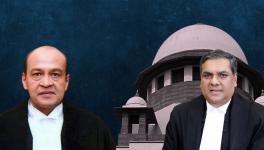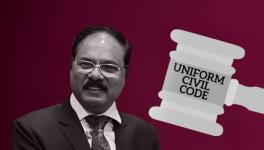The Admissibility of Electronic Record under Section 65-B of Indian Evidence Act
ncreasingly, documents are generated and stored in electronic devices and are being tendered in evidence in courts of law. It is, therefore, necessary to ensure that such devices are not tampered with and the information contained therein is authentic. In order to ensure this, Section 65A and 65B were introduced into the Indian Evidence Act in 2000. In Part I of the series, SHOBHA GUPTA explores the judgments that filled the legislative void and the implications of the legislative omission to include electronic records under the meaning of “document”.
THE law relating to evidence i.e. the Indian Evidence Act was enacted in the year 1872 to bring in the system a codified rule to procure and adduce evidence to decide a suit in courts.
Thus for a long period of time, evidence continued to be broadly divided into two categories i.e. oral and documentary. The documentary evidence continued to be generated from its conventional source which is the document written in hand or generated by a typewriter or a telegraph.
Basic mobile phones have now been replaced by smartphones that almost double up as a mini-computer on your palm. Technological advancement has brought a sea-change in the mode of communication in today’s day-to-day life.
The Evidence Act hence needed to be amended to make electronic records admissible in evidence.
Legislation took its own time in making statutory amendments to the Evidence Act and introducing a substantive law namely, the Information Technology Act 2002. The electronic record, electronic signature, electronic certificates, electronic forms, electronic commerce, electronic book or series, electronic agreements, and electronic messages, were incorporated in various laws to expand the scope of admissible evidence. Digital signatures also received statutory recognition by way of the 2009 amendment to the Information Technology Act 2000.
Legislative Void filled by judgments
But much before these amendments, the courts tried to fill the void in the exceptionally long period of statutory vacuum on electronic data and documents.
In R. v. Maqsud Ali, it was held that “it would be wrong to deny the law of evidence advantages to be gained by new techniques and new devices, provided the accuracy of the recording can be proved and the voices recorded are properly identified. Such evidence should always be regarded with some caution and assessed in the light of all the circumstances of each case”.
In Yusufalli Esmail Nagree v. State of Maharashtra, the Supreme Court observed that “since the tape-records are prone to tampering, the time, place, and accuracy of the recording must be proved by a competent witness. It is necessary that such evidence must be received with caution. The court must be satisfied, beyond reasonable doubt that the record has not been tampered with.”
Relying on R. v. Maqsud Ali, a Bench of three Judges of Supreme Court in Ziyauddin Burhanuddin Bukhari v. Brijmohan Ramdas, held that the tape-records of speeches were admissible in evidence on satisfying that “(a) The voice of the person alleged to be speaking must be duly identified by the maker of the record or by others who know it; (b) Accuracy of what was actually recorded had to be proved by the maker of the record and satisfactory evidence, direct or circumstantial, had to be there so as to rule out possibilities of tampering with the record; and (c) The subject-matter recorded had to be shown to be relevant authority according to rules of relevancy found in the Evidence Act.”
Similar conditions for admissibility of a tape-recorded statement were reiterated in Ram Singh v. Col. Ram Singh, and in R.K. Anand v. Delhi High Court.
In State v. S.J. Choudhary, a Constitution Bench, while dealing with the admissibility of opinion of a type-writer expert, relied upon the “Statutory Interpretation” by Francis Bennion that calls for making “allowances for any relevant changes that have occurred, since the Act’s passing, in law, social conditions, technology, the meaning of words, and other matters.” Thus, while it remains law, it is to be treated as always speaking.
In S. J. Choudhary the Hon’ble Supreme Court held that “there cannot be any doubt that the Indian Evidence Act, 1872 is, by its very nature, an ‘ongoing Act”’.
Legislative move with Sections 65A and 65B
The caution repeatedly emphasised by the Supreme Court in its various judgments was finally incorporated in the Evidence Act by Section 65A & 65B in the year 2000. It ensures that the parties engaged in communication through various electronic mediums can assign credence to the records and thus be able to take full advantage of the technological advancements to prove their stand in the courts.
Additionally, Section 3 of the Indian Evidence Act was amended to mean and include- (1) all statements which the Court permits or requires to be made before it by witnesses, in relation to matters of fact under inquiry; such statements are called oral evidence; (2) [all documents including electronic records produced for the inspection of the Court]; such documents are called documentary evidence.
Thus ‘evidence’ can now be divided into two parts to mean and include-
(1) Oral Evidence made by witnesses before the Court; and
(2) Documentary Evidence which after the 2000 amendment also includes the electronic records.
It is important to note that while an amendment was made in the year 2000 in the expression ‘documentary evidence’ to insert therein ‘electronic records’, no such insertion was made in the definition of ‘document’.
The expression “Document” continues to have the conventional meaning even after the 2000 amendment. Clearly, it is a conscious omission by the Legislature as against the conscious insertion of the phrase ‘electronic records’ in the definition of ‘documentary evidence’.
Chapter IV (S.59-60) of the Indian Evidence Act deals with Oral Evidence, which reads as follows: “All facts, except the [contents of documents or electronic records], may be proved by oral evidence”. Thus Section 59 carves out an exception in respect to the ‘documents and electronic records’, as against the general rule of proving all facts by way of oral evidence. In other words, it says that the “documents “and the “electronic records “cannot be proved by way of oral evidence.
Chapter V (S. 61-90A) of the Indian Evidence Act deals with ‘Documentary Evidence’. Section 61 of the Act, 1872, requires that the contents of documents may be proved by a ‘Primary Evidence’ or by a ‘Secondary Evidence’.
Section 62 defines ‘Primary Evidence’ to mean “the document itself produced for the inspection of the Court”. Explanation 2 to Section 62 provides that where a number of documents or sets – all are made by one uniform process, for example by printing, lithography, or photography, each one of them is primary evidence. But, in cases where they are copies from a common original, then they are not primary evidence of the contents of the original.
Since the expression ‘document’ under Section 2 does not include ‘electronic records’, it can be safely said that Section 62 has no application when it comes to admissibility or inadmissibility of an ‘electronic record’.
Section 63 of the Act, 1872, defines ‘Secondary Evidence’ which means and includes copies of original public documents made by mechanical processes which in themselves ensure the accuracy of the copies.
Special provisions as to evidence relating to electronic records and admissibility of electronic records were incorporated by way of Sections 65A and 65B pursuant to the Amendment in the year 2000.
Section 65A is an enabling provision which provides that the contents of electronic records may be proved in accordance with provisions of Section 65B.
Section 65B deals with the admissibility of electronic records. It is this section that has given rise to a lot of confusion as regards to the admissibility of an electronic record and it is this section which is the fulcrum of this Article. A lot of confusion has also been added through the judgments which were delivered to clarify or explain the section. Much of the confusion has been caused for the reason that many of us lawyers and judges are not technical persons and often lack the requisite basic knowledge as to how electronic records are generated.
Section 65-B sub-section (1) states that any information contained in an electronic record which is printed or is stored by computer will be deemed to be a document. An electronic record shall be admissible as evidence in any proceeding without any further proof, provided the conditions mentioned in section 65-B are fulfilled.
As pointed out earlier, by a conscious omission, the definition of ‘document’ was not amended to include ‘electronic records ‘. This is apparent from Section 65B (1), which is a deeming fiction for any information contained in an electronic record to be treated as a “document”, subject to satisfaction of the conditions laid down in sub-section 2.
In other words, by a harmonious reading of Section 2 (definition of the document), Section 61 to 65, and Section 65B, it can safely be said that the expression ‘document’ is a wider expression and with the aid of section 65B it includes ‘electronic record’ also, subject to the satisfaction of conditions laid down in Section 65B (2) to (4).
The article was originally published in The Leaflet.
(Shobha Gupta is a lawyer at the Supreme Court of India. Views are personal.)
Get the latest reports & analysis with people's perspective on Protests, movements & deep analytical videos, discussions of the current affairs in your Telegram app. Subscribe to NewsClick's Telegram channel & get Real-Time updates on stories, as they get published on our website.
























